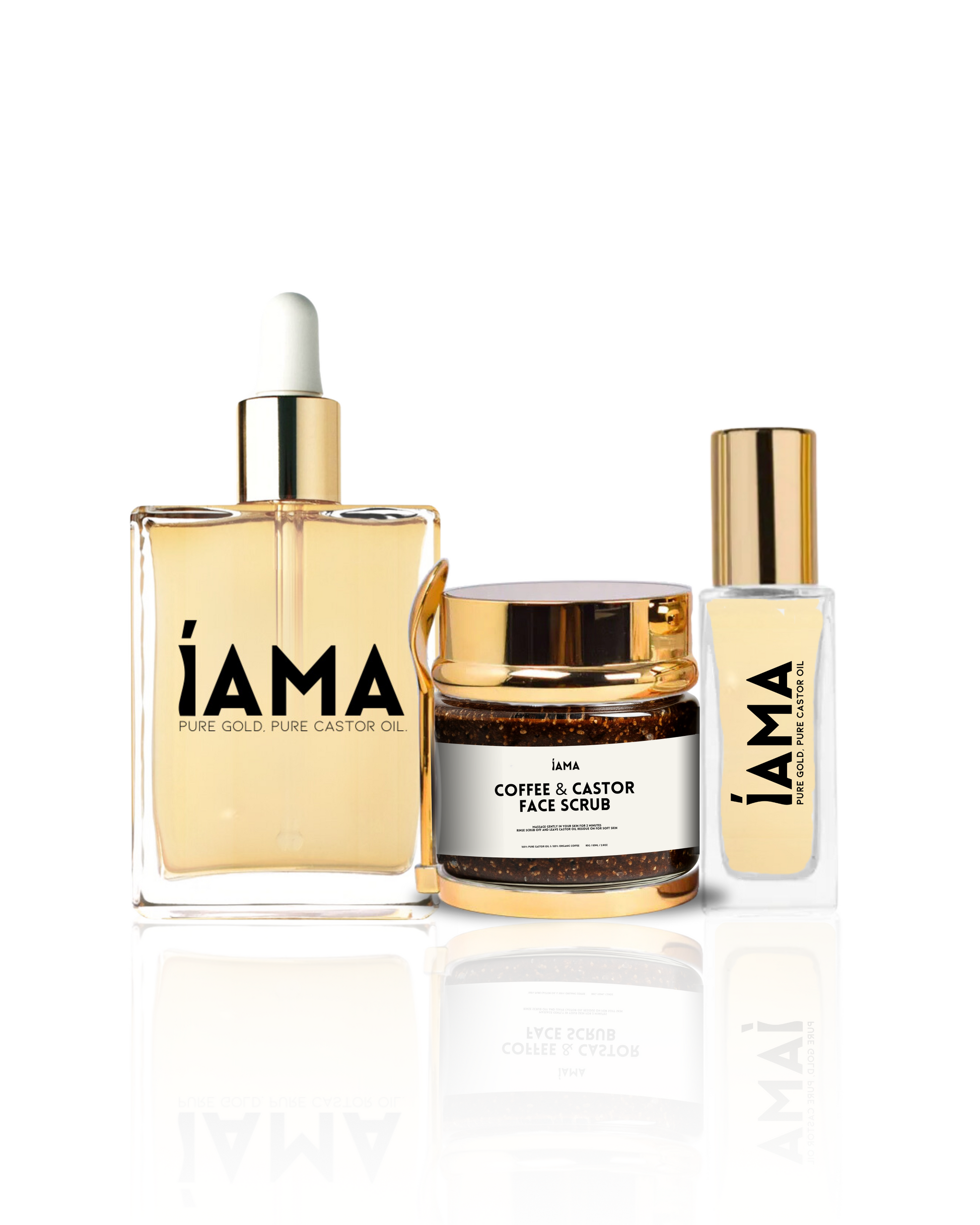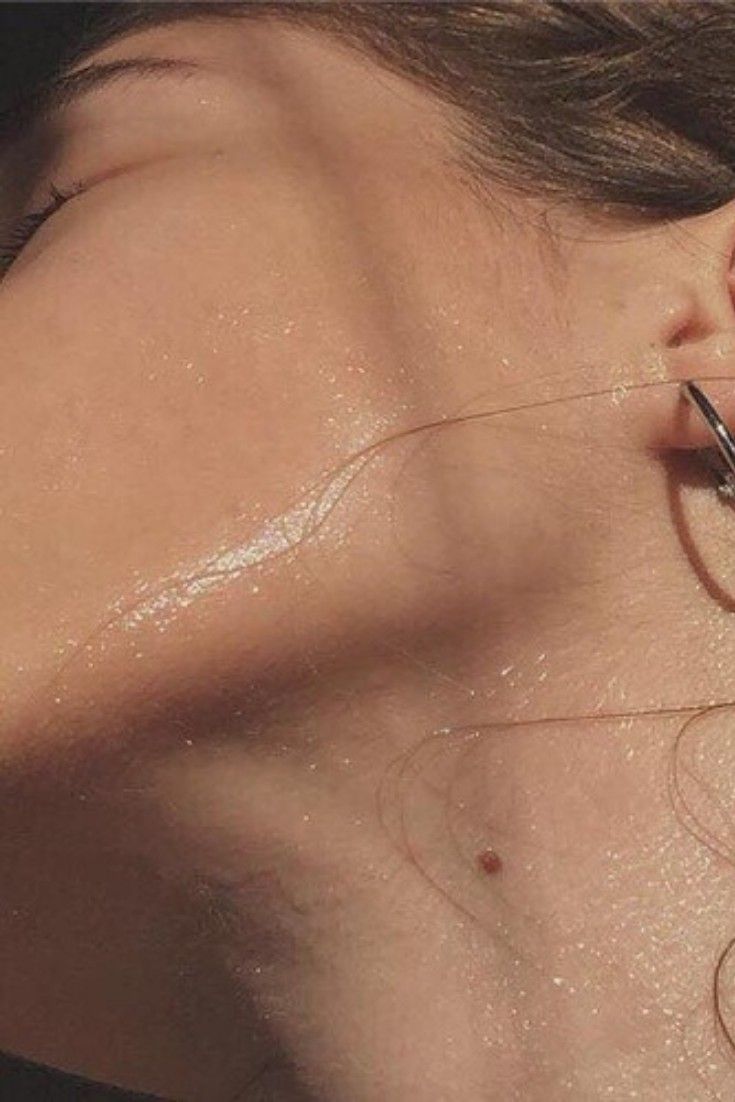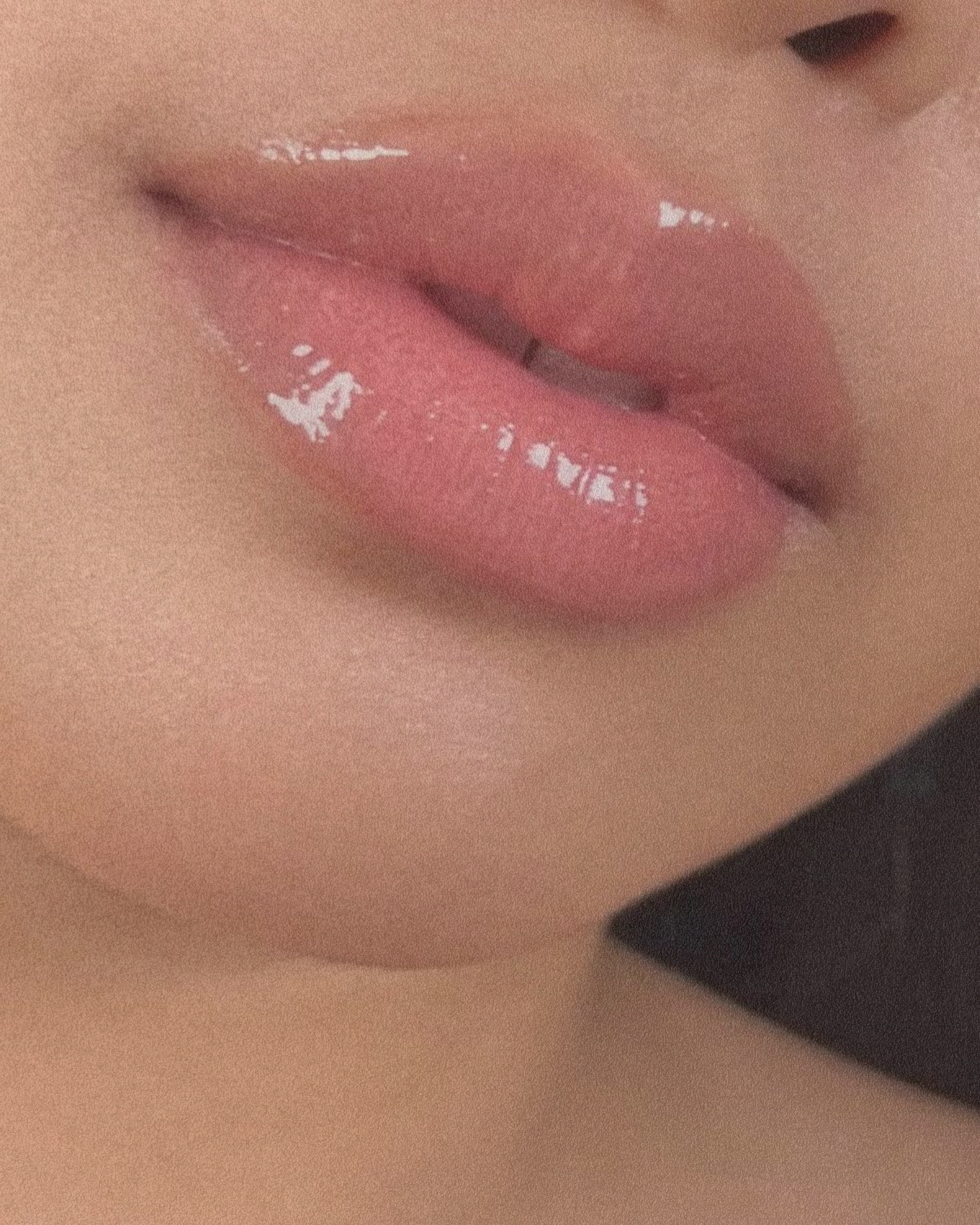As young adults in our 20's and 30's, we've noticed a growing trend among our peers: an intense focus on sun protection. Social media platforms like TikTok have amplified messages about the importance of sunscreen, leading some to apply SPF products excessively or even avoid sun exposure altogether.
While sun protection is important, there's a need for a more balanced conversation about its role in our overall health. Some common beliefs about sun exposure and SPF use may be exaggerated or misunderstood. It's crucial to discuss both the benefits of sensible sun exposure and the appropriate use of sunscreen.
We have done the research through Environmental Working Group is a 501(c)(3) nonprofit corporation. Sunscreens are now EWG Verified®.
The trouble with ingredients in sunscreens
Sunscreen products are intended to be applied to the body every day, over the course of a lifetime. The companies that make and sell sunscreen ingredients and products should test them thoroughly for potential short-term and long-term health effects. This includes toxicity testing for irritation and skin allergies, as well as testing for skin absorption and the potential to cause cancer, disrupt the hormone system and impact reproduction and development.
In 2021, the Food and Drug Administration, which oversees sunscreen safety, proposed its latest update to regulations for these products. The agency reviewed 16 ingredients and reported that only two, zinc oxide and titanium dioxide, are “generally recognised as safe and effective”, or GRASE, based on the available information.
Citing data showing safety issues, the FDA proposed that two rarely used sunscreen ingredients, aminobenzoic acid and trolamine salicylate, are not GRASE.
The FDA proposed that 12 other ingredients are not GRASE due to insufficient data: Avobenzone, cinoxate, dioxybenzone, ensulizole, homosalate, meradimate, octinoxate, octisalate, octocrylene, oxybenzone, padimate O, and sulisobenzone.
The FDA has requested additional safety data of these ingredients because of health concerns and studies by the agency that show these ingredients can be absorbed through the skin. In recent years, studies have also raised concerns about endocrine-disrupting effects of three ingredients: homosalate, avobenzone and oxybenzone.
The ingredients oxybenzone, octinoxate, octisalate, octocrylene, homosalate and avobenzone are all systemically absorbed into the body after use, according to studies published by the FDA. These studies also reported that the ingredients could be detected on the skin and in the blood weeks after they had last been used.
Other studies have reported sunscreen ingredients were detected in breast milk, urine and blood plasma samples.
Specific ingredient concerns
Oxybenzone
The most worrisome sunscreen active ingredient is oxybenzone. It is absorbed through the skin and the Centers for Disease Control and Prevention found higher levels of oxybenzone in those who report applying sunscreen.
It causes allergic skin reactions, behaves like a hormone disruptor and may be more harmful to children as they are more susceptible to the effects of chemicals.
In an evaluation of CDC-collected exposure data for American children, researchers found that adolescent boys with higher oxybenzone measurements had lower total testosterone levels.
A 2017 systematic review of 23 studies reported that there was evidence of associations between oxybenzone exposure and adverse reproductive outcomes, including birth outcomes. According to the latest proposed FDA sunscreens monograph, the agency needs further data to determine whether oxybenzone can be considered safe and effective, since:
[The] available literature … indicat[es] that oxybenzone is absorbed through the skin to a greater extent than previously understood and can lead to significant systemic exposure. … The significant systemic availability of oxybenzone … is a concern, among other reasons, because of questions raised in the published literature regarding the potential for endocrine activity.
Four studies published in 2020, after the FDA released its draft proposal, support previous findings that oxybenzone can act as an endocrine disruptor and may increase the risk of breast cancer and endometriosis. In addition, the National Toxicology Program found equivocal evidence of carcinogenicity in rats after observing increases in thyroid tumors and enlargement of the uterus in female rats with high exposure to oxybenzone.
Investigators at the University of California at Berkeley reported a dramatic drop in teen girls’ exposure to oxybenzone in cosmetics when they switched from their usual products to replacements that did not contain this chemical – suggesting sunscreen products are a significant source of exposure to oxybenzone.
Recently, the European Commission reported current human exposure levels to oxybenzone were unsafe and proposed a concentration restriction of 2.2 percent, lower than the limited amount allowed in U.S. sunscreens, which is up to 6 percent. Several countries, and one U.S. state, ban the sale of sunscreens that contain this ingredient, because it may harm aquatic life.
Due to the health concerns associated with oxybenzone, EWG recommends consumers avoid sunscreens with oxybenzone.
Octinoxate, or octyl methoxycinnamate
Octinoxate is a non-mineral UV filter. Animal studies have reported octinoxate has hormone effects on the metabolic system and affects thyroid hormone production, with some evidence for other endocrine targets, including androgen and progesterone signaling. Octinoxate can also cause allergic reactions. Several countries, and one U.S. state, ban the sale of sunscreens that contain this ingredient, because it may harm aquatic life.
Homosalate
Homosalate is also a non-mineral UV filter. The FDA has proposed that there are insufficient data to evaluate whether it is safe and effective to use in sunscreens. Homosalate can penetrate the skin and disrupt hormones.
A recent European Commission opinion reported that homosalate has a recommended maximum concentration of 1.4 percent, because of concerns for potential hormone disruption. The FDA allows U.S. sunscreen manufacturers to use it in concentrations up to 15 percent.
Octisalate
Octisalate, a non-mineral UV filter, readily absorbs through the skin at levels 10 times the FDA’s cutoff for systemic exposure. This cutoff, 0.5 nanograms per milliliter, is the maximum concentration that may be found in blood before there are potential safety concerns. The FDA has requested additional safety tests when a sunscreen is absorbed above this level.
The FDA 2019 proposed update suggests there is insufficient data to determine whether octisalate can be classified as safe and effective to use in sunscreens. A case report showed that the chemical has been linked to allergic contact dermatitis.
Octocrylene
Octocrylene readily absorbs through the skin at levels about 14 times the FDA’s cutoff for systemic exposure. But the agency suggested there is not enough data to determine whether the chemical be classified as GRASE.
Octocrylene has been linked to aquatic toxicity, with the potential to harm coral health. It is often contaminated with benzophenone, which is a carcinogen. According to one study, benzophenones levels can increase in products over time.
The European Commission recently concluded there is some evidence of octocrylene’s hormone-disrupting potential but current use concentrations up to 10 percent are considered safe.
Avobenzone
Avobenzone is a widely used non-mineral filter that provides protection from ultraviolet A, or UVA, rays and is often used with other non-mineral active ingredients in products offering broad spectrum protection. In one study, avobenzone was detected on average in samples at levels nine times above the FDA’s cutoff for systemic exposure.
Because avobenzone is not stable, it must be paired with other ingredients that act as stabilizers to prevent it from breaking down in the sun. Breakdown products of avobenzone have been shown to cause allergic reactions. Avobenzone can disrupt the endocrine system and has been shown to block the effects of testosterone in cellular studies.
Titanium dioxide and zinc oxide
Mineral sunscreens are made with titanium dioxide and zinc oxide, usually in the form of nanoparticles. The FDA in 2021 proposed that both titanium dioxide and zinc oxide be classified as GRASE. Evidence suggests that few, if any, zinc or titanium particles penetrate the skin to reach living tissues.
Because of the potential of exposure through inhalation, the International Agency for Research on Cancer has classified titanium dioxide as possibly causing cancer in humans. For this reason, powdered or spray formulations containing titanium dioxide are a concern. Zinc oxide is also a cause for inhalation concerns when used in spray and powder products
In general, mineral sunscreens tend to rate better than chemical sunscreens in EWG’s sunscreen guide. But to improve their stability when exposed to sunlight and prevent these chemicals from breaking down, manufacturers use forms of minerals coated with other inert chemicals.
To lower the risks to sunscreen users and maximize these products’ sun protection, EWG supports stronger guidelines and restrictions on the types of zinc and titanium used in sunscreens, including nanoparticles, which we have analyzed in detail.
Other active ingredients
Mexoryl SX, an uncommon active ingredient in the U.S., was approved by the FDA to be used in one specific sunscreen formulation in 2006. This ingredient offers strong UVA protection and public research provides no evidence of hormone disruption and rare incidence of skin allergy. But the FDA’s analysis showed there wasn’t enough data to classify the ingredient as safe and effective.
Aminobenzoic acid, or PABA, and trolamine salicylate are active ingredients that are no longer commonly used in U.S. sunscreens. The FDA’s 2019 proposal concluded that the risks of these chemicals outweigh their benefits and proposed classifying them as unsafe, not GRASE.
These myths and hysteria around the sun and the truth about SPF is extremely dangerous and needs to be discussed more.
At iAMA, we believe in natural protection. One of our favourite natural oils to use is our Castor oil.
Can you Use Castor Oil as a Natural Spf?
Castor oil is extracted from the seeds of the Ricinus communis plant, is a powerhouse of natural ingredients that can help protect and heal the skin. Known for its moisturising and healing properties, castor oil offers a gentle and natural alternative to conventional sun protection and after-sun care products.
It contains a rare property, Ricinoleic Acid
The star component of castor oil, ricinoleic acid, makes up 90% of its fatty acid content. Ricinoleic acid is known for its potent anti-inflammatory properties, which help soothe irritated and sunburned skin. It also forms a protective barrier on the skin, which can reduce the penetration of UV rays, providing a natural, albeit mild, level of sun protection. Its antimicrobial properties can help prevent infections in damaged skin.
Vitamin E
Castor oil is rich in vitamin E, a powerful antioxidant that protects the skin from oxidative stress caused by UV radiation. When UV rays penetrate the skin, they generate free radicals—unstable molecules that can damage cells and accelerate aging. Vitamin E neutralizes these free radicals, preventing cellular damage and supporting the skin’s natural repair processes. This makes vitamin E a crucial component in both sun protection and after-sun care.
Omega-6 and Omega-9 Fatty Acids
These essential fatty acids are vital for maintaining the skin’s health and resilience. Omega-6 (linoleic acid) plays a key role in reinforcing the skin’s moisture barrier, preventing dehydration, and reducing inflammation. Omega-9 (oleic acid) enhances the skin’s softness and elasticity, helping it recover from sun exposure. Together, these fatty acids keep the skin hydrated, supple, and protected from environmental stressors.
Triglycerides (Tricinolein)
Castor oil contains unique triglycerides, such as tricinolein, which act as emollients, locking in moisture and keeping the skin smooth and hydrated. Tricinolein’s ability to retain moisture is particularly beneficial after sun exposure when the skin tends to lose hydration, becoming dry and flaky. By maintaining moisture levels, castor oil helps the skin recover quickly and prevents peeling.
With its rich blend of ricinoleic acid, vitamin E, and essential fatty acids, castor oil offers a unique combination of sun protection and after-sun care. It’s a simple, effective, and natural solution that allows you to enjoy the sun’s benefits without compromising your skin’s health.
Isn't it dangerous to use Castor oil as an spf?
It's natural to think that fats - such as oils - act like grease on a frying pan, and applying oils to your body before going out in the sun is the equivalent of coating your duck in fat and popping it in the oven.
If you slather yourself in oils and go out in the baking sun straight away, you may well risk this effect. However, the difference between natural vegetable oils and such as margarine, is that it is not absorbed by the skin, but simply sits on top of it.
Castor oil on the other hand, is absorbed by the skin within a few minutes, providing a protective effect on par with the skins own sebum.
Thanks for reading! Please click on the underlined text to view the studies linked to the context.
iAMA is the home of pure gold, pure Castor Oil.
♥︎ Shop Castor Oil gold www.iamawellness.com
♥︎ Contact us by emailing contact@iamawellness.com
♥︎ Follow us on Instagram @iamawellness






